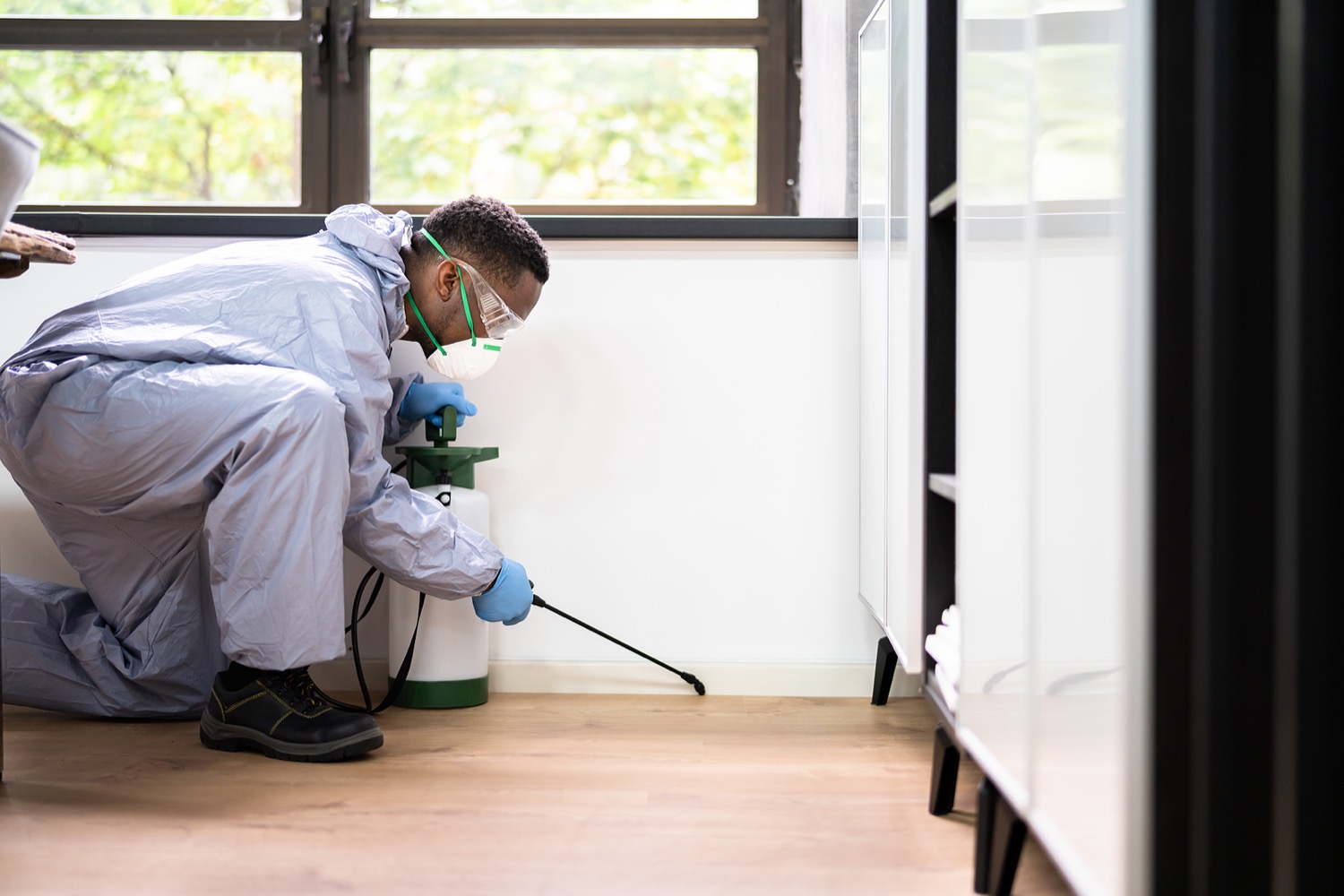Relied On A1 Exterminator Charlotte NC - Comprehensive Pest Solutions
Relied On A1 Exterminator Charlotte NC - Comprehensive Pest Solutions
Blog Article
Bed Pest Treatment Malfunction: Comparing Chemical Vs. Non-Chemical Solutions
In the world of parasite control, especially when dealing with the relentless problem of bed pests, the choice in between chemical and non-chemical treatment services can be a pivotal one. Both techniques use distinctive advantages and drawbacks, affecting elements such as effectiveness, safety and security factors to consider, and total cost. By examining the nuanced details of each technique, a more clear understanding of which course to seek in addressing a bed bug infestation can be achieved.
Efficiency of Chemical Treatments
Chemical therapies for bed insect problems have actually been widely identified for their rapid and potent efficacy in eradicating these pests. When thinking about the performance of chemical therapies, it is critical to understand that they can offer a extensive and fast service to a bed bug issue. Professional pest control operators commonly count on pesticides to target bed pests at different phases of their life process, including adults, eggs, and nymphs. These chemicals generally work by interfering with the bed insects' nerve system, bring about paralysis and eventual fatality.
In addition, chemical therapies have the advantage of offering recurring impacts, suggesting that they can continue to get rid of bed bugs also after the initial application. This recurring action is especially helpful in combating any possible re-infestations. Additionally, the quick activity of chemical therapies can bring alleviation to individuals dealing with extreme bed pest invasions, permitting them to regain control of their space swiftly.
Safety Interest In Chemical Solutions
One important aspect that needs careful consideration when utilizing chemical options for bed insect therapy is making certain the security of passengers and the environment. Exposure to specific chemicals used in bed pest treatments can lead to respiratory system issues, skin inflammation, or various other negative responses, specifically in people with pre-existing problems or sensitivities.
In addition, the environmental influence of chemical solutions is one more substantial consideration. Some chemicals made use of in bed insect treatments may be unsafe to valuable insects, wild animals, and environments if they seep into the dirt or water systems. It is vital to use chemical therapies carefully, following safety guidelines, and taking into consideration less hazardous options to alleviate these dangers and ensure the effective and secure administration of bed bug invasions.
Benefits of Non-Chemical Strategies
Thinking about the potential security concerns and ecological impact connected with chemical services for bed pest therapy, checking out non-chemical strategies offers a promising option with numerous distinct benefits. Non-chemical techniques supply a much safer choice for households, particularly those with family pets, individuals, or kids conscious severe chemicals. These methods get rid of the dangers of exposure to harmful substances, decreasing the capacity for adverse wellness results. Furthermore, non-chemical therapies are eco pleasant, as they do not add to air or water contamination, making them a sustainable choice for insect control.
Furthermore, non-chemical options can be reliable in targeting bed pests, including hard-to-reach areas where chemical treatments may not pass through - A1 charlotte bed bug exterminator. Methods such as warm therapy, vacuuming, steam cleansing, and mattress coverings offer detailed eradication without the use of harmful chemicals.
Limitations of Non-Chemical Treatments

Furthermore, non-chemical therapies commonly require multiple applications to accomplish successful obliteration. This can be time-consuming and may not always ensure full removal of all bed pests and their eggs, particularly in hidden or hard-to-reach locations.
Moreover, the success of non-chemical therapies greatly depends on proper application and thoroughness, which can be challenging for individuals without expert know-how. Poor application of non-chemical approaches might result in incomplete removal, leading to consistent problems and the need for extra treatments.
Therefore, while non-chemical treatments have their advantages, it is important to recognize these limitations and consider them when identifying the most reliable approach for taking care of bed bug problems.
Cost Contrast: Chemical Vs. Non-Chemical Options
Offered the restrictions related to non-chemical treatments, an essential aspect to evaluate in the context of bed pest management is the expense contrast between chemical and non-chemical options. Chemical treatments usually involve the application of pesticides by professionals, which can vary from $250 to $900 per area, relying on the seriousness of the invasion and the size of the area to be dealt with. In comparison, non-chemical therapies like warm treatment or vapor can be extra costly, with costs varying from $1,000 to $6,000 for a whole home. While the preliminary cost of chemical therapies may seem lower, multiple treatments might be needed to completely eliminate the invasion, possibly enhancing the overall price. On the other hand, non-chemical options may provide a much more green and sustainable service, although they can be cost-prohibitive for some people. Eventually, when thinking about the expense of bed bug therapy options, it is very important to evaluate the in advance costs versus the efficiency and lasting sustainability of the chosen approach.
Conclusion

Taking into consideration the prospective safety and security concerns and environmental effect connected with chemical services for bed pest treatment, exploring non-chemical approaches presents an websites encouraging option with a number of unique advantages.Given the constraints connected with non-chemical treatments, a crucial element to evaluate in the context of bed pest management is the price comparison in between chemical and non-chemical options. In contrast, non-chemical therapies like heat treatment or steam can be extra pricey, with prices varying from $1,000 to $6,000 for a whole home. While the preliminary expense of chemical therapies may seem lower, multiple treatments may be needed to completely eradicate the invasion, possibly increasing the overall expense.In conclusion, when contrasting chemical and non-chemical bed insect therapy alternatives, it is important to think about efficiency, safety, benefits, constraints, and price.
Report this page